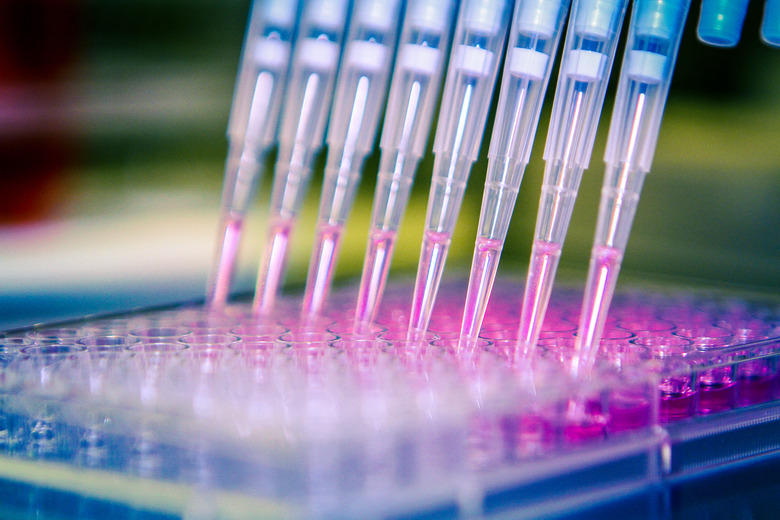How Enzyme Activity Changes As Enzyme Concentration Decreases
Modern science has discovered that many essential biological processes would be impossible without enzymes. Life on Earth depends on biochemical reactions that can occur at an adequate rate only when they are catalyzed by enzymes. But enzymatic reactions can still occur too slowly if the concentration of enzymes in a reactive system is low.
Accelerated Reactions
Accelerated Reactions
Enzymes assist chemical reactions by causing molecules to interact in a way that reduces the amount of energy needed to start a reaction. This energy, known as activation energy, is supplied by the environment. For example, the ambient thermal energy associated with an environment's temperature can be used as activation energy. The rate of chemical reactions in biological environments is often restricted by limited amounts of ambient energy, but enzymes overcome this restriction because they enable a smaller amount of energy to activate more reactions.
One Enzyme, One Reaction
One Enzyme, One Reaction
In most situations, decreasing enzyme concentration has a direct influence on enzyme activity because each enzyme molecule is able to catalyze only one reaction at a time. The molecule to which an enzyme binds is called a substrate. In general, one enzyme binds to one substrate in order to lower the activation energy for one chemical reaction. If all the enzymes in a system are bound to substrates, additional substrate molecules must wait for an enzyme to become available following the completion of a reaction. This means that the rate of reactions will decrease as enzyme concentration decreases.
A One-to-One Relationship
A One-to-One Relationship
In most biological environments, the concentration of enzymes is lower than the concentration of substrates. As long as this is true, the relationship between enzyme concentration and enzyme activity is directly proportional. On a graph that shows reaction rate versus enzyme concentration, this directly proportional relationship looks like a straight line with a slope of one. In other words, one additional enzyme increases the rate by one reaction per unit of time, and one removed enzyme decreases the rate by one reaction per unit of time.
Enzymes Without Substrates
Enzymes Without Substrates
An exception to the directly proportional relationship is that decreasing enzyme concentration will not lead to decreased enzyme activity if the substrate concentration is lower than the enzyme concentration. In this situation, the removed enzymes have no effect because the system still has sufficient enzymes to bind with all available substrates. Thus, a graph of enzyme activity versus enzyme concentration will eventually level off into a flat line as the enzyme concentration increases to a level that is similar to the substrate concentration.
Cite This Article
MLA
West, Joseph. "How Enzyme Activity Changes As Enzyme Concentration Decreases" sciencing.com, https://www.sciencing.com/enzyme-activity-changes-enzyme-concentration-decreases-10250/. 13 March 2018.
APA
West, Joseph. (2018, March 13). How Enzyme Activity Changes As Enzyme Concentration Decreases. sciencing.com. Retrieved from https://www.sciencing.com/enzyme-activity-changes-enzyme-concentration-decreases-10250/
Chicago
West, Joseph. How Enzyme Activity Changes As Enzyme Concentration Decreases last modified August 30, 2022. https://www.sciencing.com/enzyme-activity-changes-enzyme-concentration-decreases-10250/
